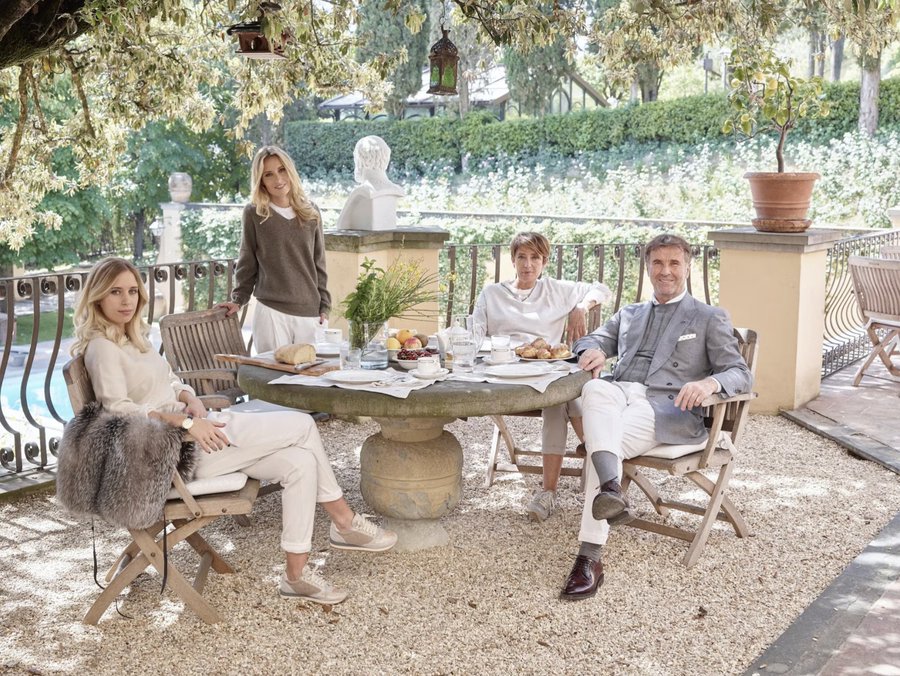13 August 2023 | Marketing
Brunello Cucinelli
By Ari Murray
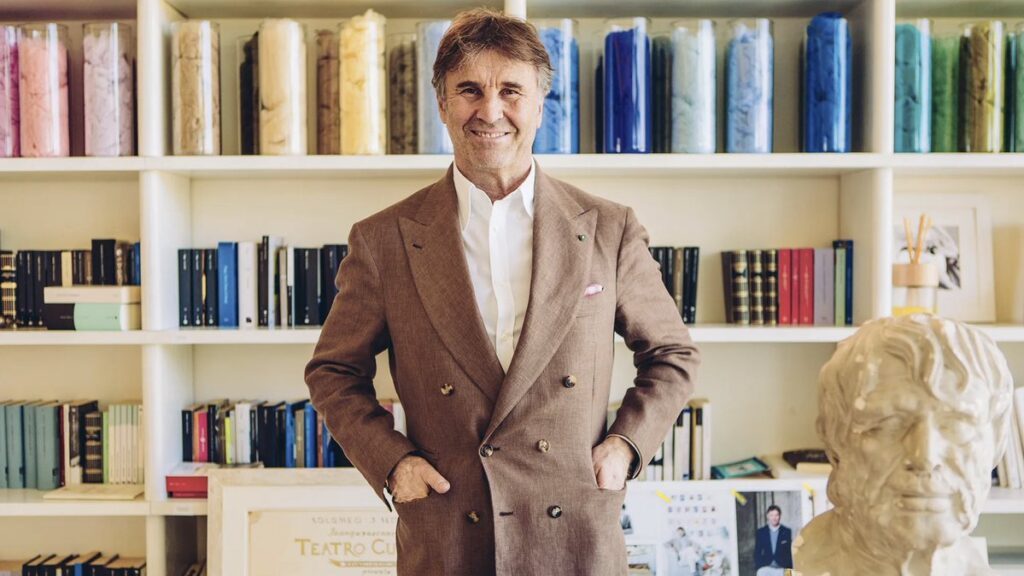
At a Brunello Cucinelli boutique recently with my friend Kate, I asked if a blue sweater I liked came in black.
“No,” the saleswoman replied. “Black doesn’t often appear in nature so it’s not inspiring to Brunello.”
Incredible!! Kate and I never knew. Did you know? We found this very telling.
May I tell you why?
Before I explain, an intro to Cucinelli: They make some of the finest clothes money can buy—emphasis on MONEY.
But they wouldn’t be about to cross $1B in annual sales if “really expensive” was their core value.
Like any great luxury brand, Cucinelli knows story is everything.
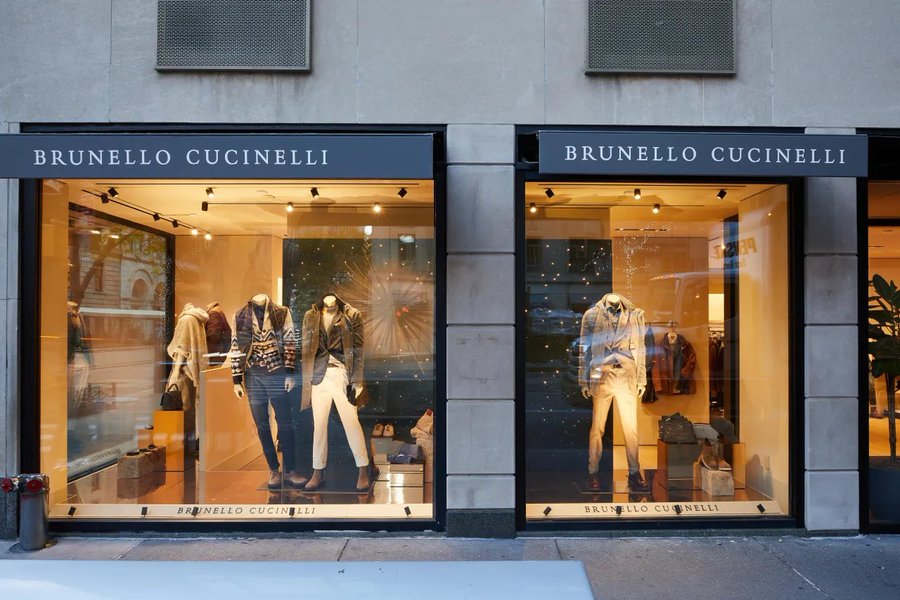
When you operate at this price point, you need a *very* compelling story.
Fine craftsmanship alone simply won’t cut it.
A sweater that costs 3 months’ rent needs to stand for *AND* against something bigger than itself.
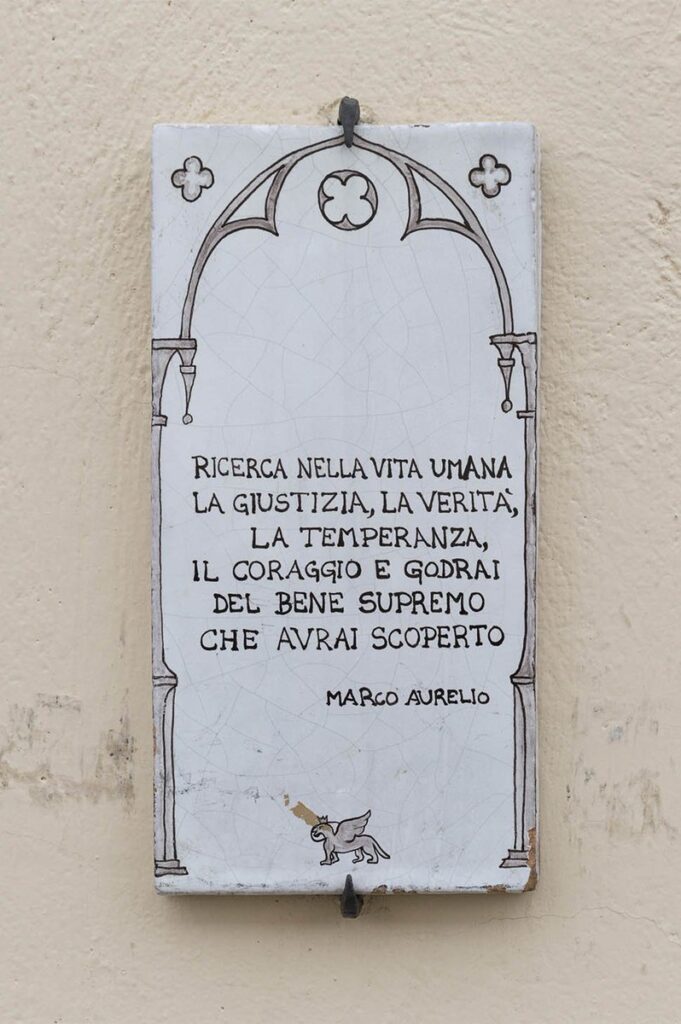
Cucinelli’s story was always about “this, not that.”
Brunello grew up in a rural village in Umbria, Italy. His family didn’t have electricity. From the start, he knew what he DIDN’T like.
Defining who you are means defining who you aren’t, down to the smallest details.

He founded his namesake brand in 1978.
At first, he ONLY sold women’s sweaters, made by Umbrian artisans from carefully-sourced Mongolian cashmere.
He only had about $550 in capital. But he refused to cut corners.
He only made one thing, but he made it better than anyone else.
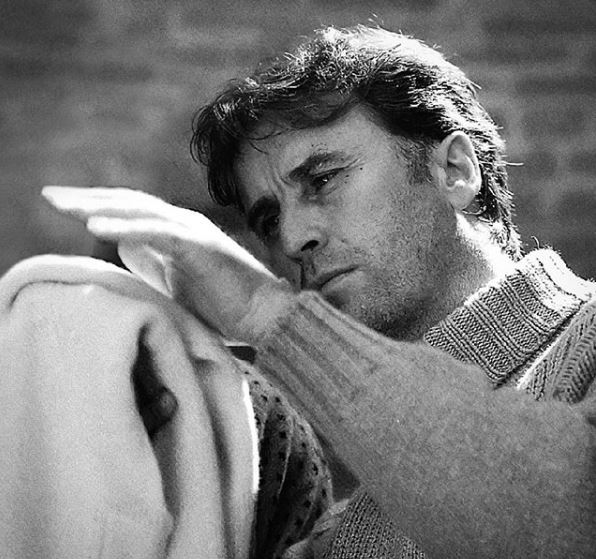
Although his first sweaters came in bright colors, he quickly narrowed down his aesthetic to neutrals like tan, gray, navy, and cream.
Even his dog Viola is on-brand.
“This, not that,” aesthetic edition: ✔️
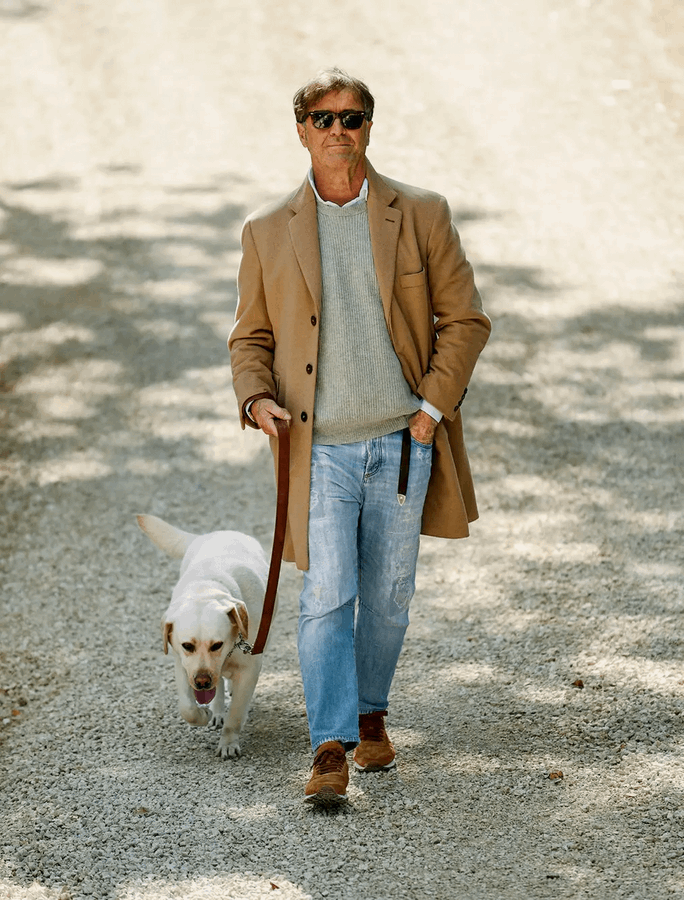
But “this, not that” in product design is just one part of a strong brand.
Over the years, Brunello stayed true to his roots. The son of a farmer turned factory worker, he saw how blue-collar workers were dehumanized.
He also saw industry & opportunity evaporating in Umbria.

Brunello started a new mission: resurrection.
Instead of moving to Milan, he established the Cucinelli HQ in the medieval village of Solomeo, 15 miles from where he was born.
Population: 400-ish. He’s been restoring it, stone by stone, for 40 years.
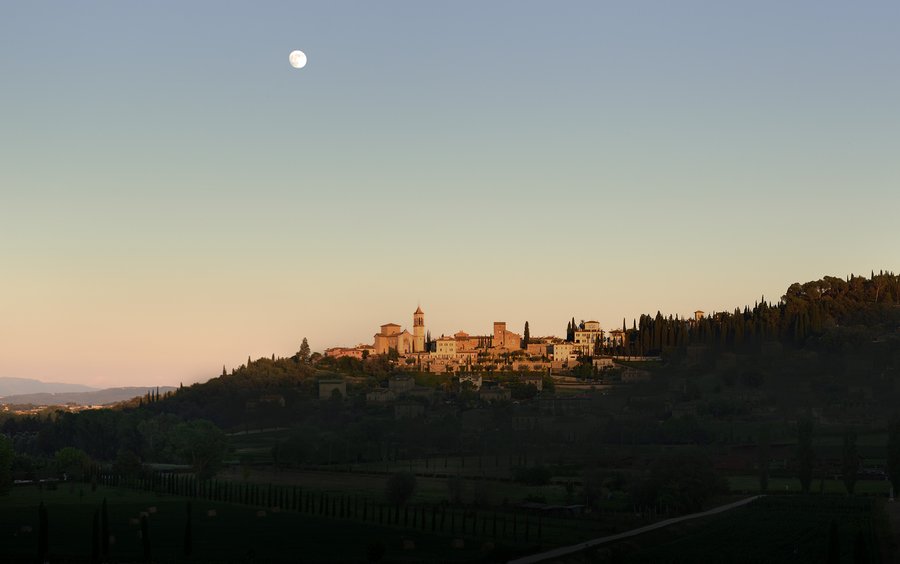
He’s revived buildings, including a 12th-century castle, made offices, and opened a school. He built parks, a library, an amphitheater, and a winery.
Plaques in the offices and around town feature quotes from philosophers, like one from Kant: “Beauty is a symbol of moral good.”
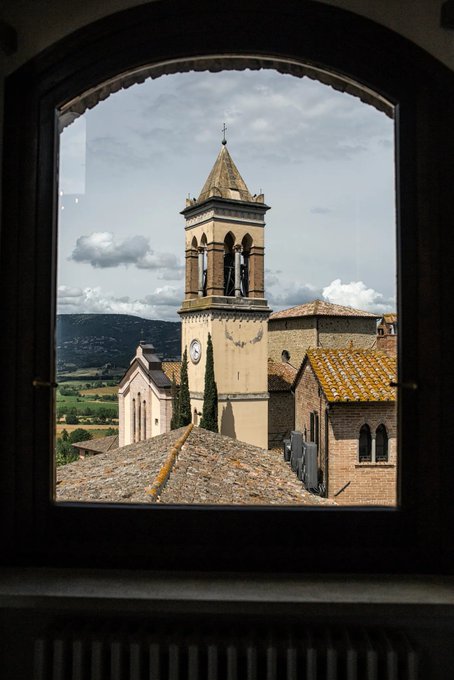
Cucinelli values also apply to the workforce.
Employees don’t clock in or out, and each role enjoys ~20% higher wages than industry standards.
Workers take 90-minute lunch breaks for subsidized, multi-course meals in a canteen that’s often mistaken for a restaurant by tourists.
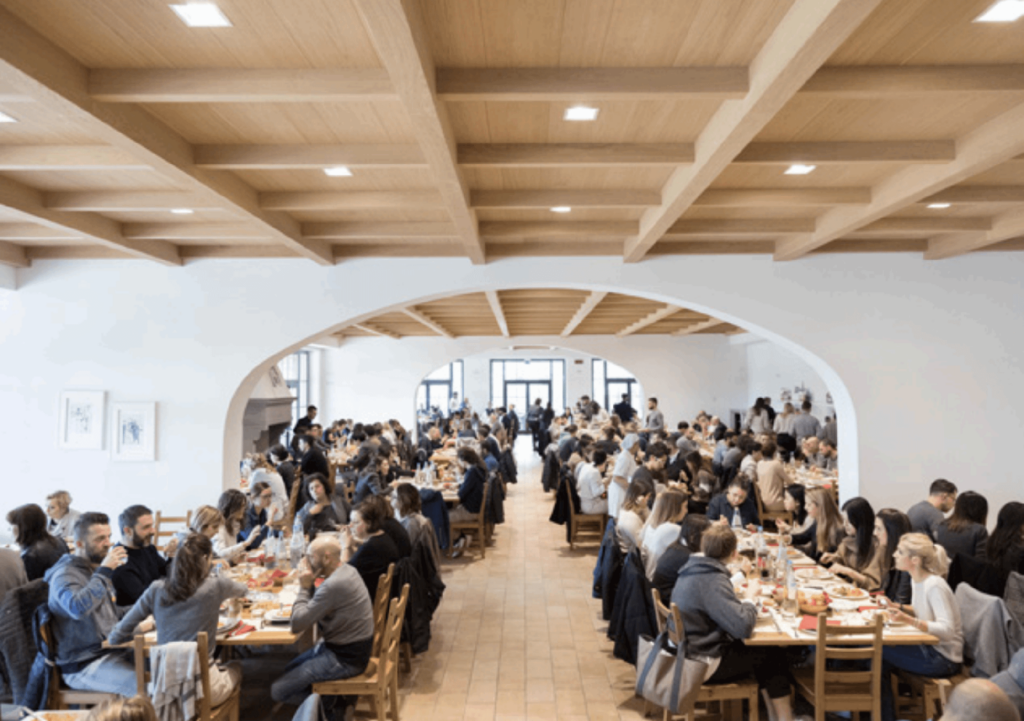
My favorite detail? Cucinelli literally shuts down every building at 5:30, and sends everyone home.
After-hours emails? Absolutely not allowed.
It’s all part of those values: providing dignified livelihoods, making products that will last, and operating sustainably.
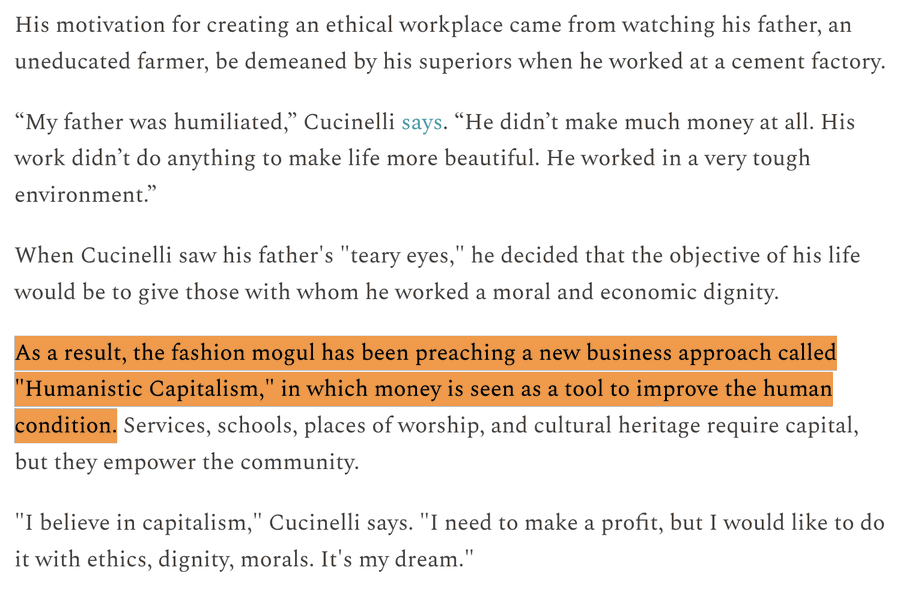
Let’s recap.
For Cucinelli, true luxury means:
✔️ Giving back (20% of profits are donated)
✔️ Providing dignified employment in beautiful surroundings
✔️ Strict environmental practices
✔️ Businesses that improve lives, not exploit them
✔️ Leaving the world better than you found it

Cucinelli arguably has the most robust set of values on the market.
It’s why he attracts attention from Silicon Valley, with their world-changing aspirations. Zuckerberg, Bezos, and more are all devotees.
But my favorite example is an old one, and features the color black:
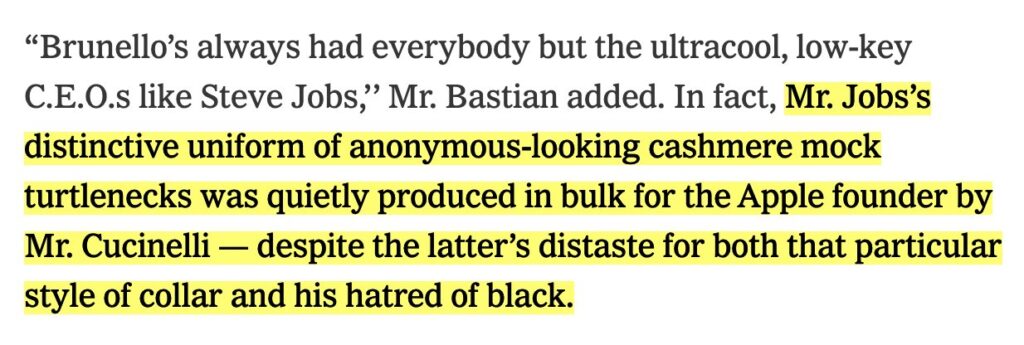
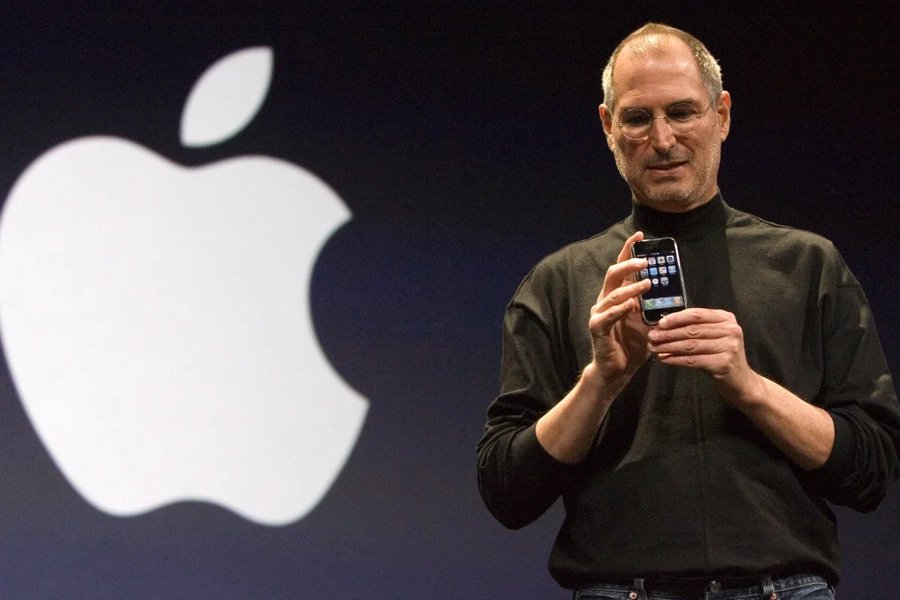
To a brand like Cucinelli, clearly-articulated values are vital.
Why? Because a luxury purchase isn’t just about buying quality.
It’s about signaling a set of aesthetic and personal values to people in the know. It says what you stand for—and what you don’t.
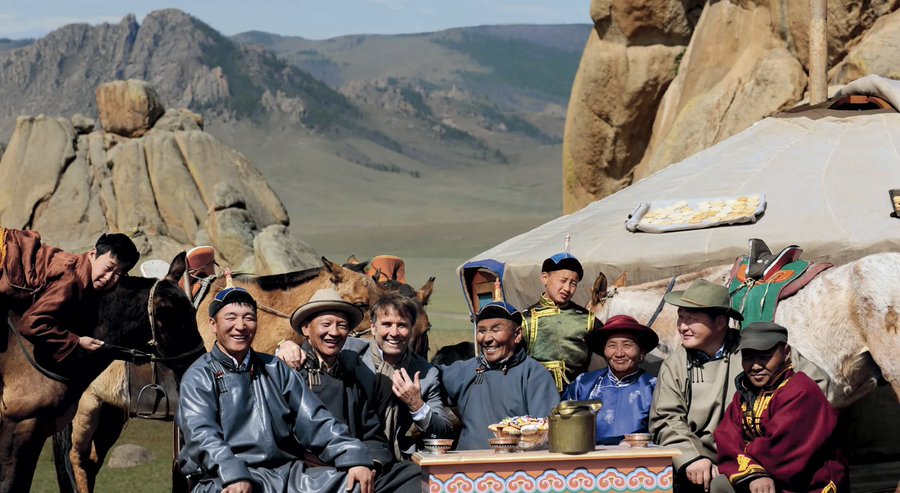
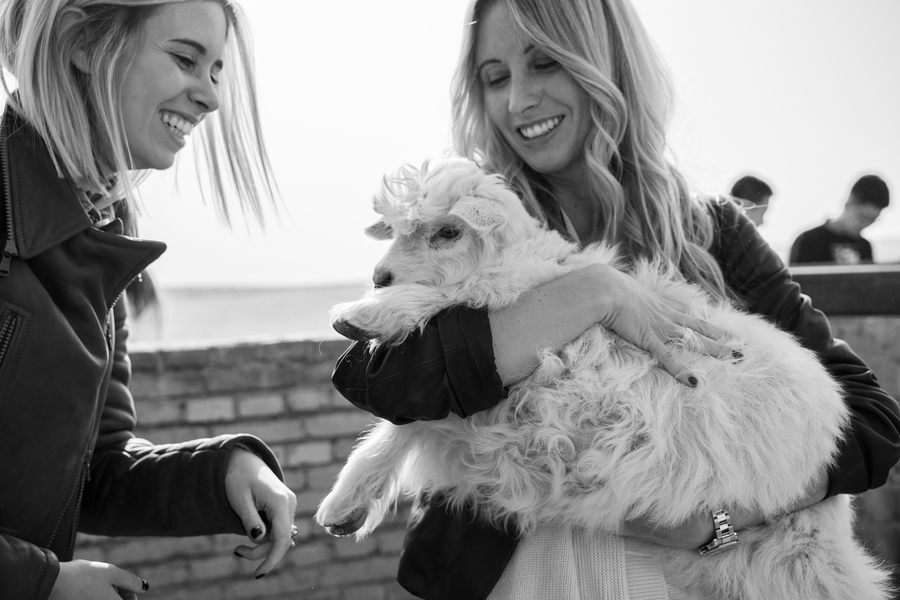
And listen, I get it. It’s easy to dismiss all this as PR BS.
But BC’s reputation is based on 45 years of meticulous brand + business building, in both good and bad times.
Their values are central to their operation, not a tacked-on checklist of corporate responsibility goals.
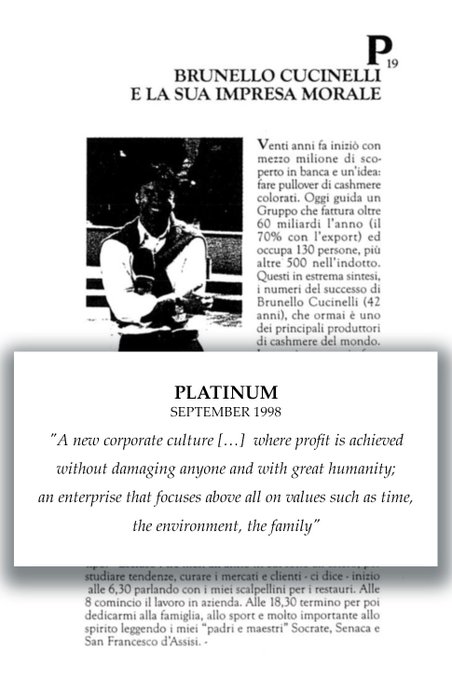
And it’s REALLY working out for them.
How do I know? Because their sales are only getting more insane.
2 weeks ago, they raised 2023 sales guidance after posting a 27.5% revenue jump in Q2.
2023 is expected to be their first billion-dollar year. Say it with me: Mamma *mia*.
A lot of best practices for luxury brands don’t make sense for mass-market businesses—throttling supply, raising prices, not worrying about scale.
But knowing your “this, not that”? That’s vital for ANY brand’s success, no matter your price point.
Buon mercato! 🇮🇹
